Francis Picabia Biography

Francis Picabia was a French Avant-garde painter of the early 20th Century. He had extremely wide-ranging talents and interests, and was both a prolific artist and writer. He was instrumental in the founding of the Dada Movement, and of popularizing the art of the European Avant-garde in the United States.
Picabia was born in Paris in 1879, of mixed parentage, in the sense of having a French mother and Spanish father, which was somewhat unusual for France in that period of time. He studied at the École des Beaux-Arts and at the École des Arts décoratifs of Paris. Until 1908 he painted mainly landscapes in the manner of Corot and the Impressionists, especially Sisley (e.g. Landscape/Paysage, Riverbank / Rivière, Bank at Poissy / Bords de l'eau à Poissy.)
Then, combining the vivid Fauvism of Matisse on one hand, and the Cubism of Braque and Picasso on the other, he developed his own style of Cubism that was brighter and more dynamic than the somber monotone works of Cubism's founders. Examples include Young Girl/Jeune fille, Star Dancer on a Transatlantic Cruise / Danseuse étoile sur un transatlantique.
In 1910, Picabia met Marcel Duchamp, a pioneer in the use of Dada, or "ready-made art", and Guillaume Apollinaire, an Avant-garde poet and critic. Both would significantly influence Picabia's ideas about art.
In 1913, Picabia travelled to the United States for the first time and submitted his abstract paintings to the Armory Show in New York City, an international exhibition of growing prominence among Avant-garde artists. The paintings were successful with the public and brought him some renown.
Picabia returned to New York in 1915, where came together with Marcel Duchamp and painters of the American Avant-garde to form the New York Society of Dadaists. The group published the periodical 291, to which Picabia contributed.
Back in France, on January 25th, 1917, Picabia published the first issue of his own periodical, which he called 391, a reference to the American Dadaists' 291. In this issue, he would move away from geometrical abstractions and publish his first "Mechanical Drawings". In this series of compositions, colored copies of technical drawings would suddenly take on the lines of human figures without ever becoming less than abstract (Ici, C'est Ici Stieglitz. 1915; Young American Girl in a State of Nudity, 1915; Parade Amoureuse, 1917). These "mechanomorphs" were full of humor and teasing Dadaist sarcasm, demonstrating the paradox of visual perception, which could find the mimesis of natural forms in abstract technical drawings.
In the same year, he returned to the USA and there published further issues of his periodical, assisted by Marcel Duchamp. 391 would continue to be published until 1924.
In 1918 Picabia moved to Switzerland, where he joined the Zurich group of Dadaists and published a book entitled "Poèmes et dessins de la fille née sans mère" ("Poems and Drawings of the Girl Born without a Mother"). He took active part in the activities of the groupm while continuing to paint his "mechanomorphs" (Infant Carburettor, 1919). He contributed to Dada magazine. In 1920 he began to publish the periodical, Cannibale, and in 1921, together with Breton and others, he dissociated himself from the "orthodox" Dadaists and changed his allegiance to Surrealism. In the beginning of the 1920s Picabia became interested in collages, for which he used all kind of materials (Feathers. 1921; Straw Hat. 1921, Woman with Matches. C. 1923-24)
1927 saw the beginning of Picabia's period of so-called "transparencies." The artist was looking for alternative methods to depict three-dimensional space without the traditional rules of perspective. In the "transparency" approach, flat images of different scales overlay and interlace to show an object from a variety of viewpoints. When the eye becomes accommodated to the intersections of different planes and foreshortening, an illusion of three-dimensionality is created. Examples of such works include Hera. c. 1929, Adam et Ève. c. 1931.
In 1934, the transparent images were replaced yet again by the heavy, brutal shapes of pseudo-classicism. Exaggerating the manner of the self-taught Primitivists and the Kitsch style, Picabia parodied the "high" genres of allegory, portraiture and mythological scenes (Spanish Revolution, 1936; Self-Portrait, c. 1940, Nudes on a Sea Beach, 1941).
During World War II, Picabia lived in Switzerland and in the south of France. After the end of the war, he returned to Paris, where he came into contact with the Existensialists. In his late works, abstractions exist side by side with the grotesque.
Picabia also worked for the theatre, designing decorations for festivals and Gala-shows. He left literary works -- verse, art critiques, articles on the theory of art.
The painter died on 30 November 1953.
Bibliography
Francis Picabia. His Art, Life and Times. By W.A. Camfield. Princeton. 1979.
Picabia. By M. L. Borras. Barcelona-Paris. 1985.
Francis Picabia: Accommodations of Desire 1924-1932 by Sarah Wilson. Kent Gallery Inc., 1989.
Francis Picabia: The Late Works 1933-1953 by Francis Picabia, Zdenek Felix (Editor), Roberto Orth, Arnauld Pierre. Hatje Cantz Publishers, 1998.
Picabia by Alain Jouffroy. Assouline, 2003.
- Landscape/Paysage.
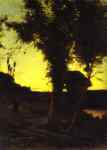
1898. Oil on canvas. 34 x 23 cm. Private collection.
- Riverbank / Rivière.
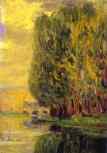
1905. Oil on canvas. 27 x 19 cm. Private collection.
- Bank At Poissy / Bords De L'Eau À Poissy.
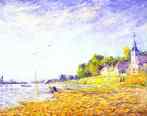
c.1906-07. Oil on canvas. 73 x 92 cm. Private collection.
- Young Girl/Jeune Fille.
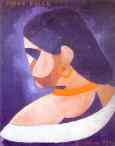
1912. Oil on canvas. 100 x 81 cm. Private collection.
- Star Dancer On A Transatlantic Cruise / Danseuse Étoile Sur Un...
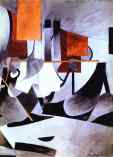
1913. Watercolor on paper. 75 x 55 cm. Private collection.
- Hera.
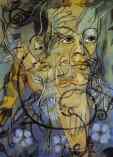
c.1929. Oil on cardboard. 105 x 75 cm. Private collection.